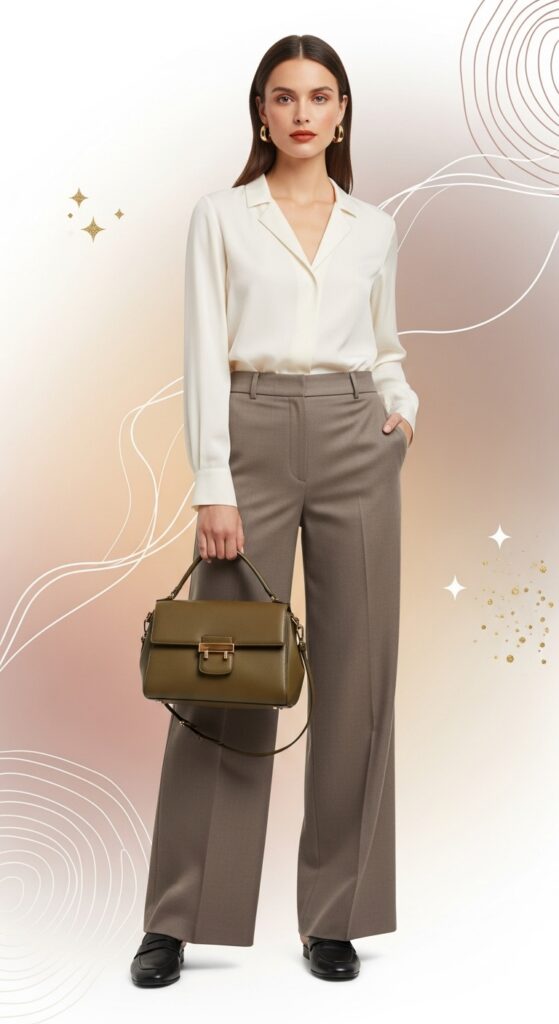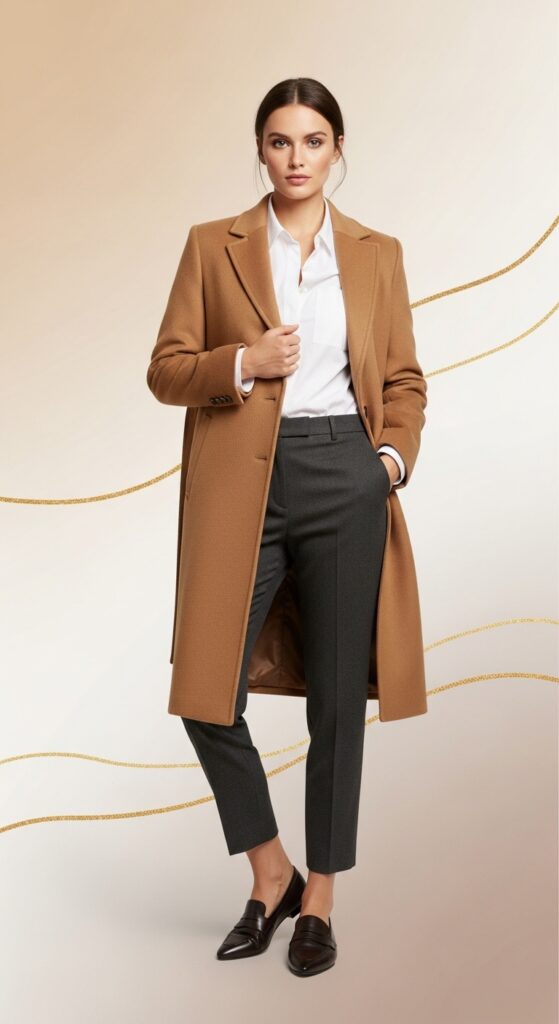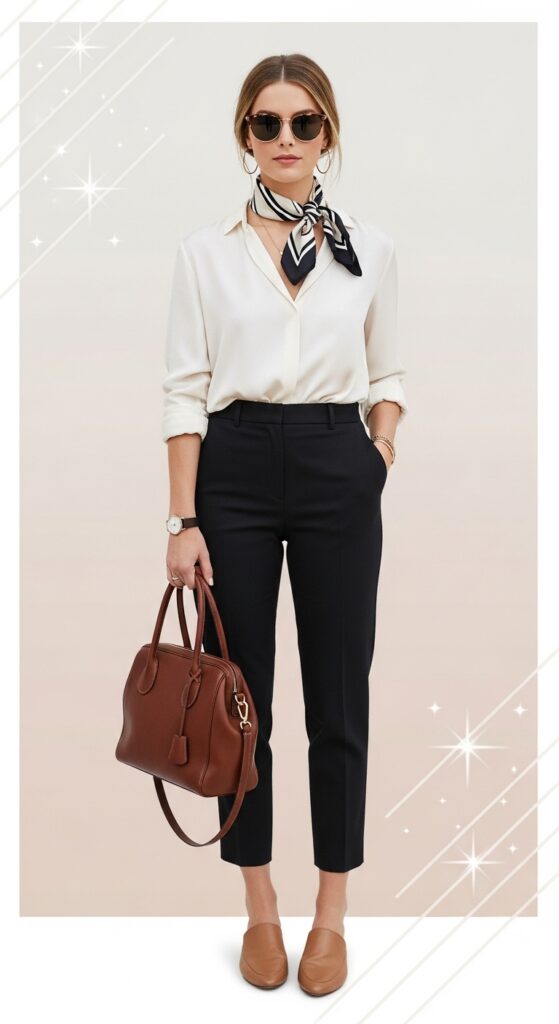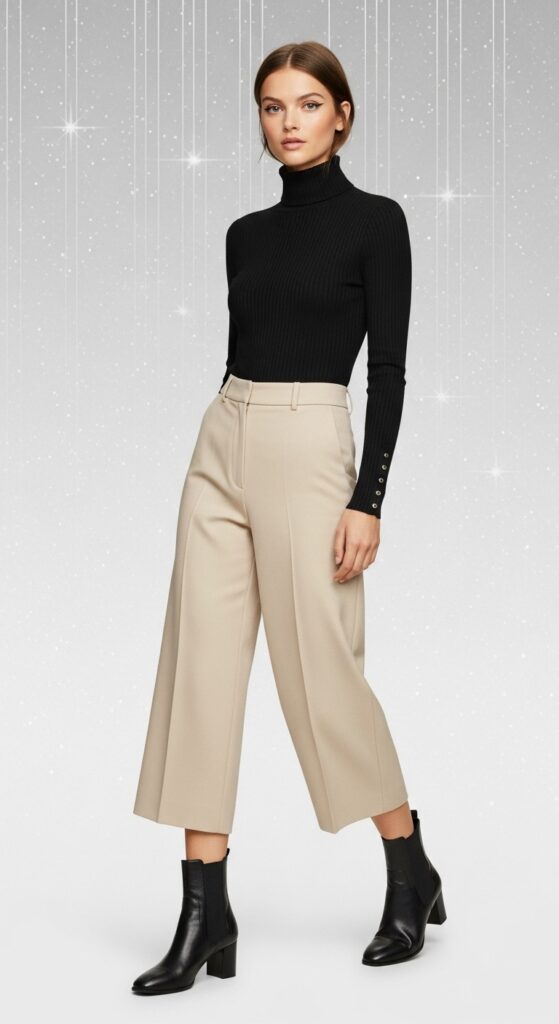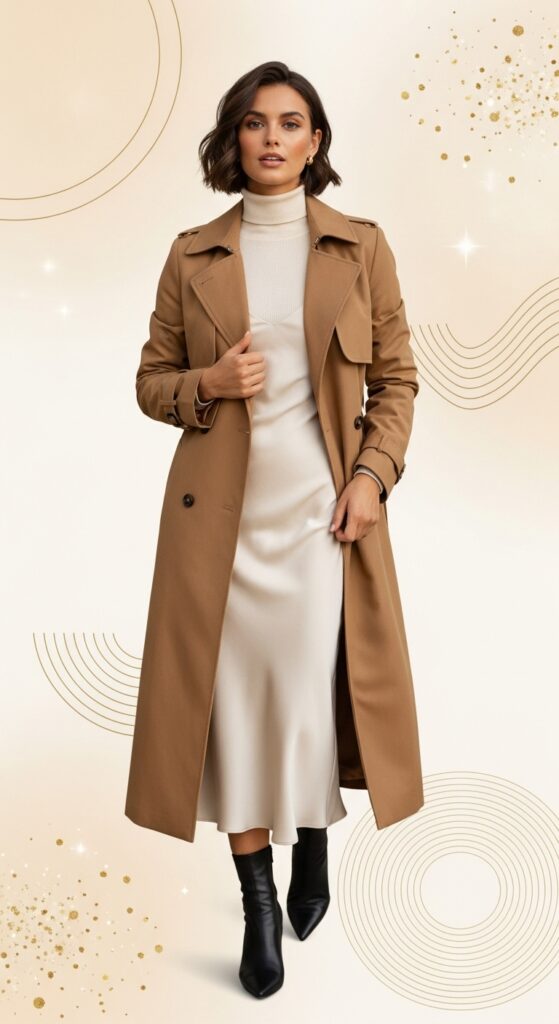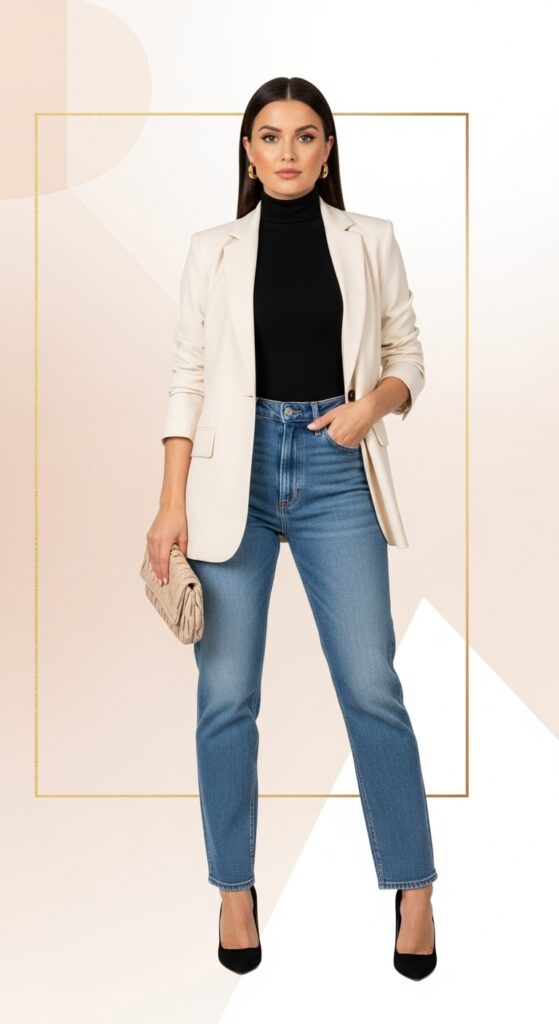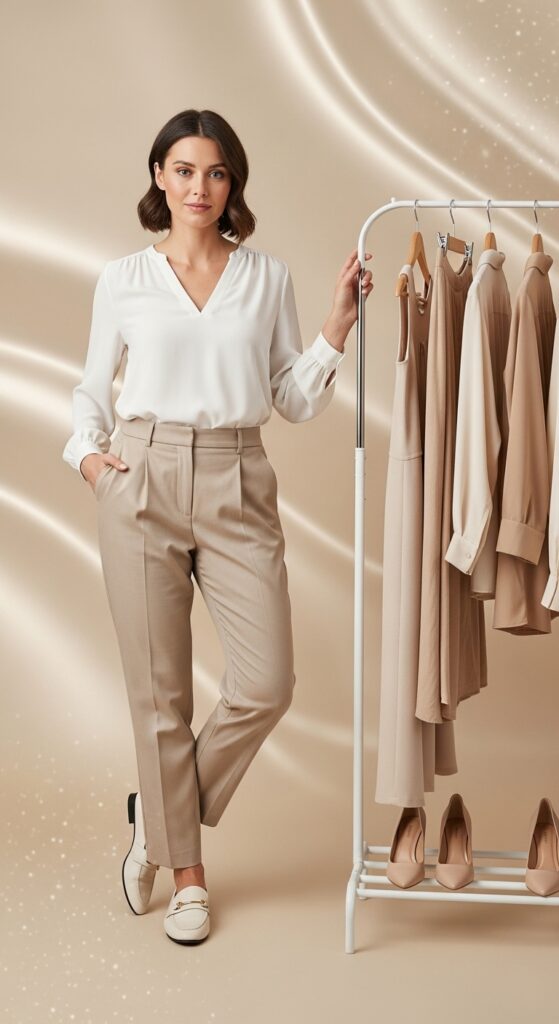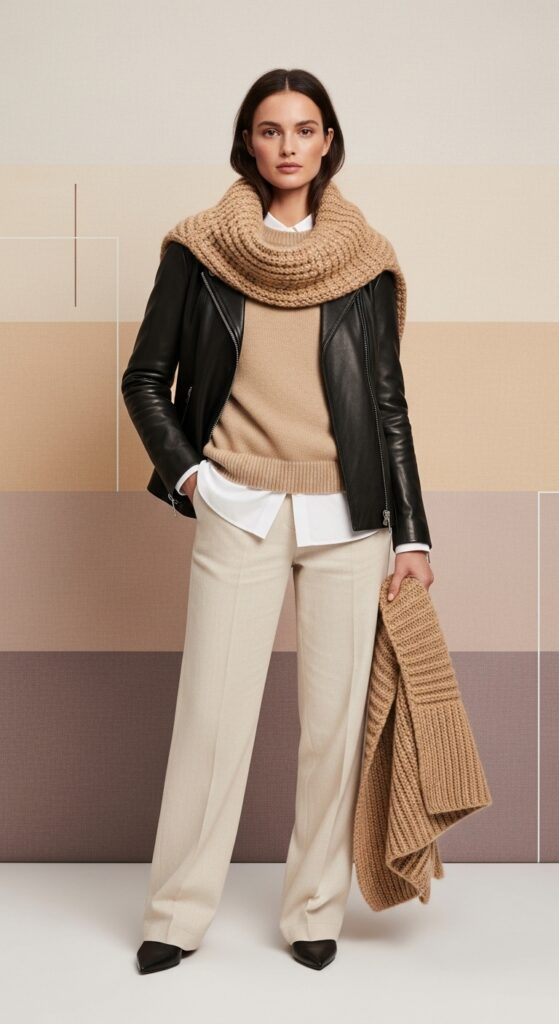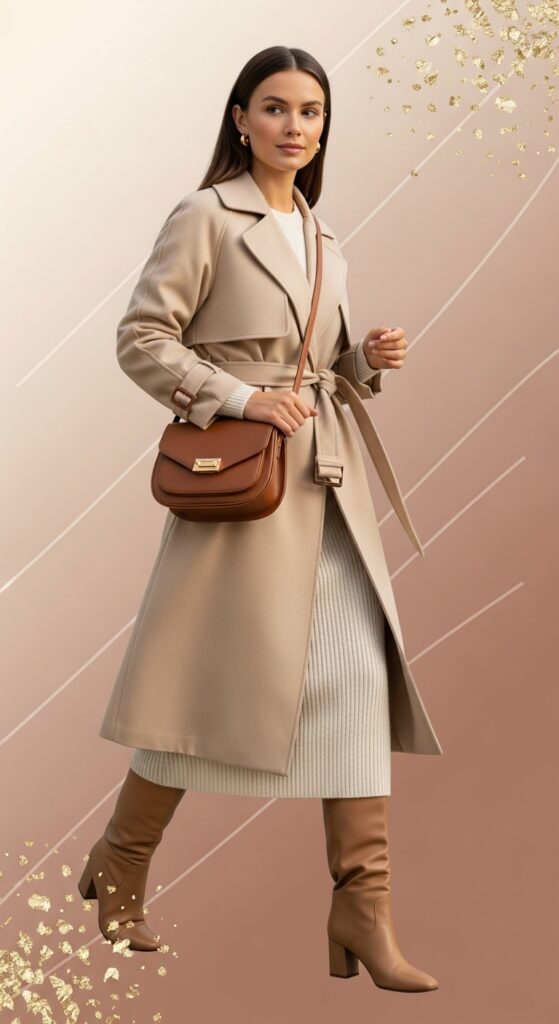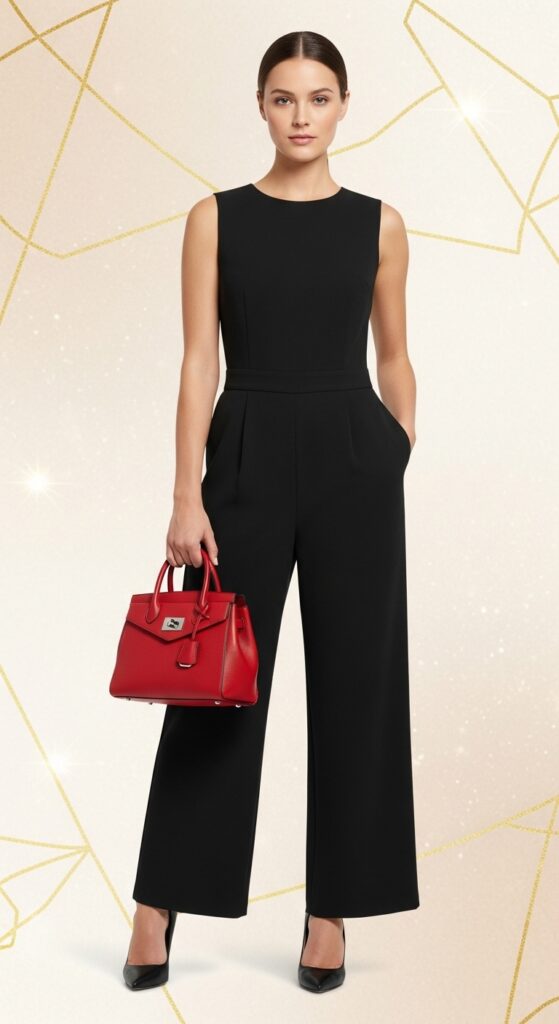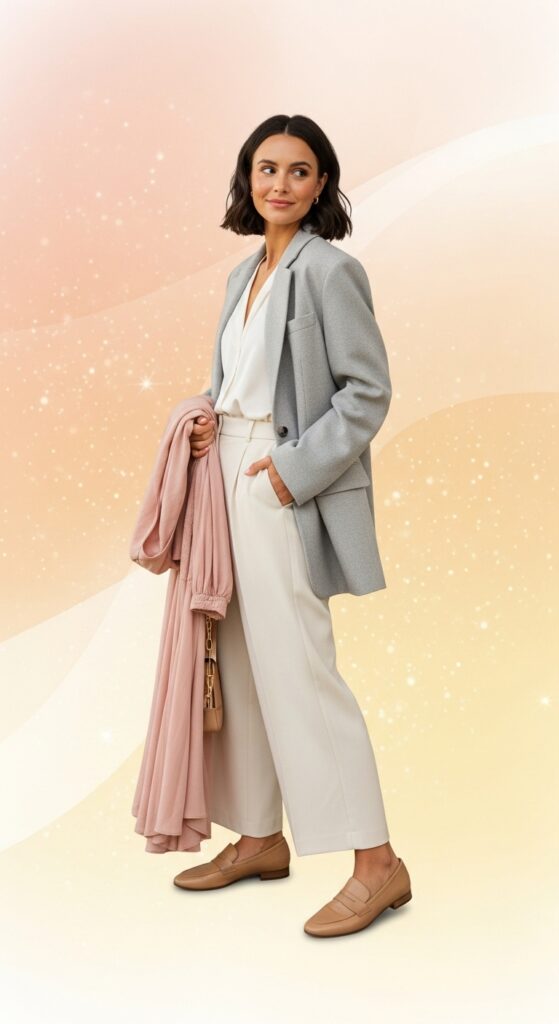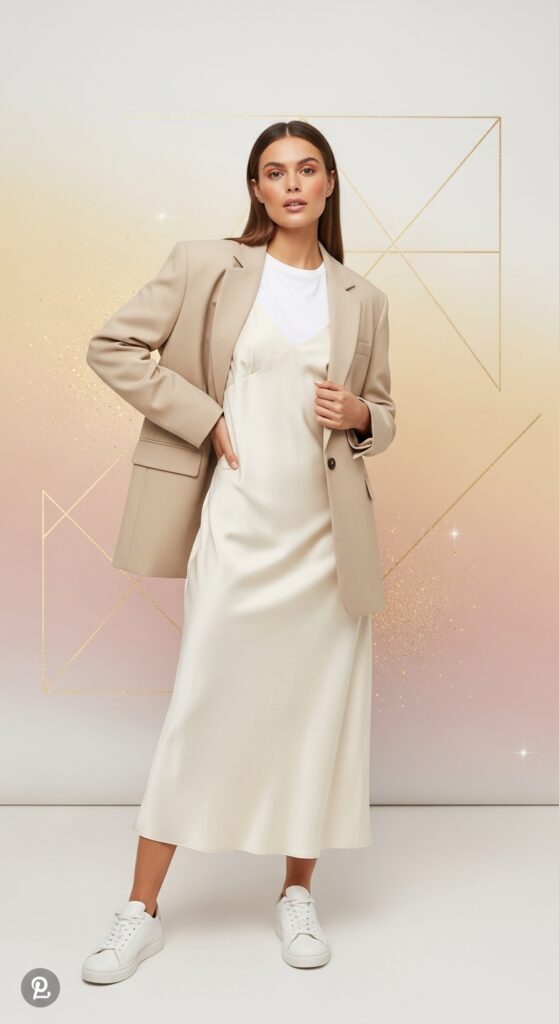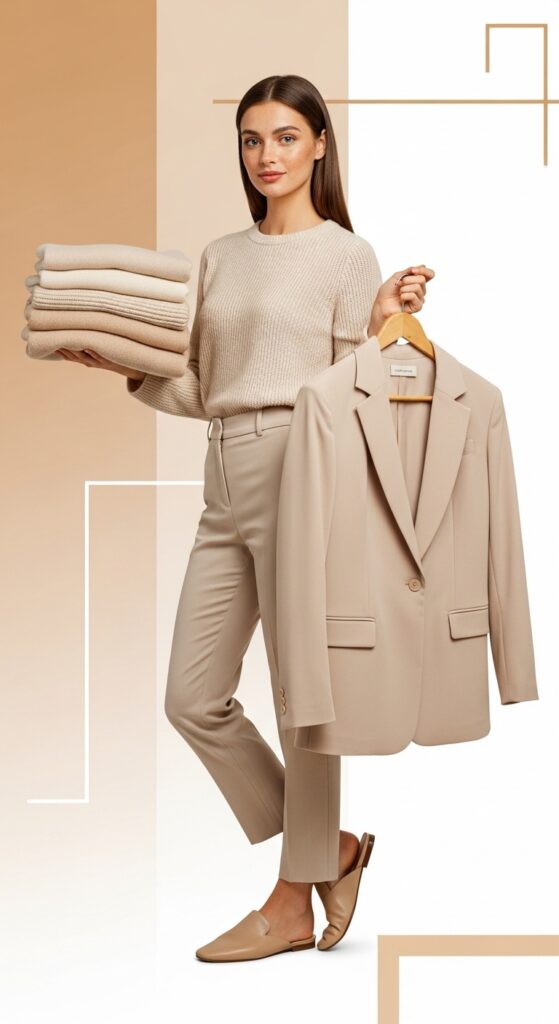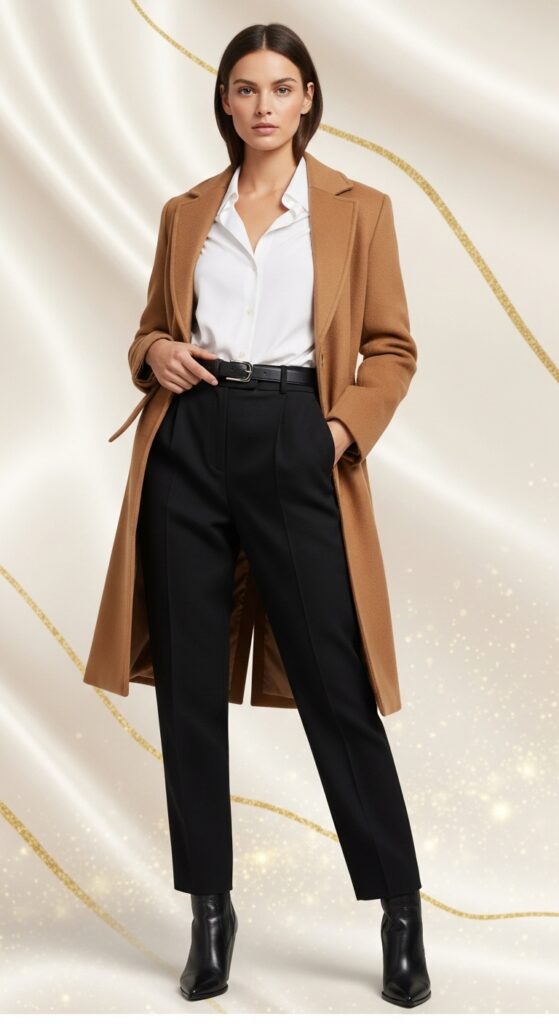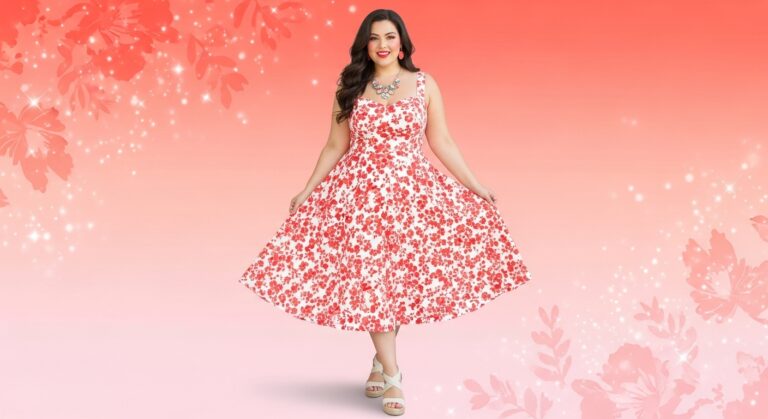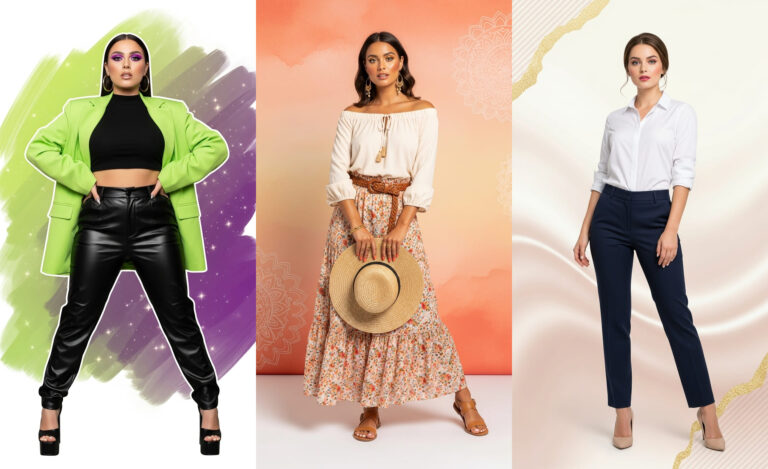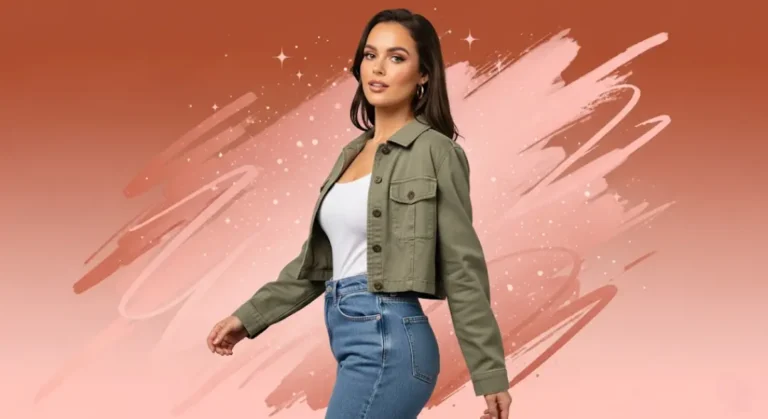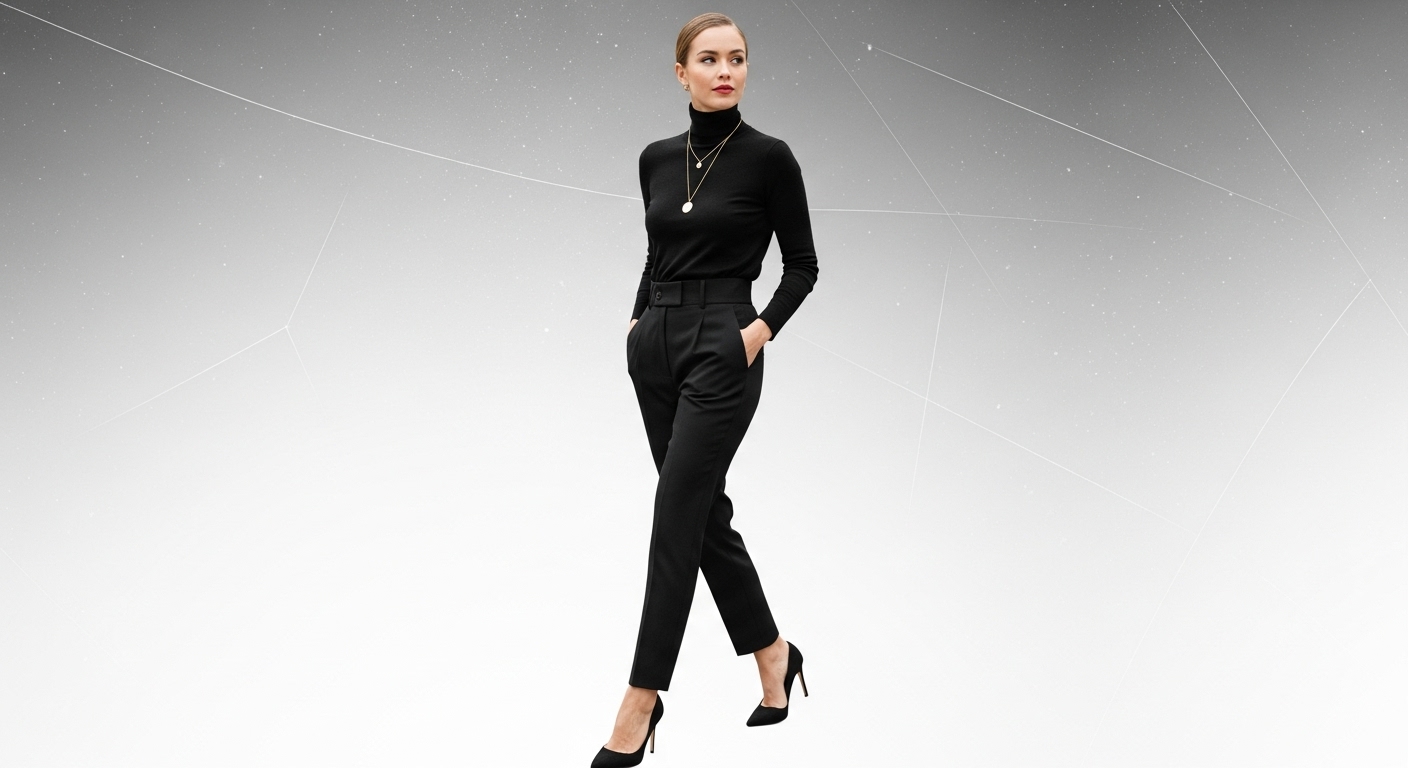
When I first heard about minimalist fashion, I pictured stark white closets and a sea of black turtlenecks. I thought the idea sounded almost too restrictive, like a style meant for someone with far more discipline than I could ever claim. Yet, after years of wrestling with a closet full of colors and patterns that never quite felt like me, I found myself longing for simplicity. Not the absence of personality, but the quiet confidence of walking out the door knowing everything simply works together. Have you ever felt that tug—a gentle urge for less complication, more clarity?
Minimalist fashion is not a rulebook. It’s not an exclusive club where only a certain body shape or budget applies. It is a whisper of calm among the noise, a way of dressing that lets you breathe. Clean lines, classic cuts, and a muted palette allow room for you, your story, and your quirks to shine through. Once I started clearing away the visual clutter, I found more space for creativity, not less. Each piece in my wardrobe began to feel purposeful, chosen, and even cherished.
If you’ve ever felt overwhelmed staring at a full closet but feeling like you have nothing to wear, you’re not alone. I’ve been there, staring at shelves crammed with impulse buys and fleeting trends. Minimalist style offers a gentle path forward—one built on intention and ease.
Here are 15 styling tips, each tested by experience, that might help you create a wardrobe rooted in clarity and grace.
Build a Palette That Resonates
Choosing a cohesive color palette is one of the simplest ways to create harmony in your closet. I realized early on that sticking with a handful of shades—like soft ivory, black, navy, and muted taupe—made every piece work together. Suddenly, I stopped second-guessing every outfit because each item felt like part of a thoughtful story. This approach cuts down decision fatigue, letting you focus on silhouette and detail instead.
A palette isn’t about giving up the colors you love; it’s about curating hues that bring out your personality and fit your lifestyle. If olive green flatters your skin, let it play a starring role. If you live in denim, navy blue is a natural anchor. Try these simple steps to develop your palette:
- Lay out your most-worn pieces and notice patterns in shade or tone.
- Test a few accent colors, like terracotta or dusty blush, against your core neutrals.
- Create a mini “color card” with fabric swatches or images on your phone for reference while shopping.
Over time, this careful selection turns your closet into a collection of options that mix and match effortlessly. A clear palette not only simplifies your wardrobe but also makes it more versatile. When every item works together, getting dressed becomes a small pleasure rather than a chore.
Prioritize Quality Over Quantity
Minimalism doesn’t mean buying nothing—it means making every purchase count. The shift for me happened the first time I saved up for a tailored wool coat instead of picking up three trendy jackets on sale. The difference in fabric, stitching, and fit felt transformative. High-quality garments simply last longer and look better, even after many wears.
It’s tempting to chase the excitement of a quick buy, especially during sales. But a closet packed with low-quality clothes quickly loses its appeal. Instead, take a moment to inspect seams, fabric weight, and fit before making a purchase. Over the years, I’ve learned to shop with intention, focusing on timeless pieces such as:
- A crisp white shirt in breathable cotton
- Tailored trousers that skim the ankle
- A structured blazer that can go from work to dinner
This shift to quality has saved me time and money in the long run. Well-made pieces need less frequent replacement and always feel current. Investing in quality also builds a sense of pride and care into your wardrobe—each piece feels like a trusted companion rather than a disposable trend.
Celebrate Silhouette and Structure
Minimalist fashion thrives on shape and fit instead of busy prints or embellishments. Clean lines, gentle draping, and thoughtfully structured garments can be surprisingly expressive. I’ve found that a boxy tee tucked into tailored pants looks both modern and relaxed, while an oversized sweater over slim jeans brings a quiet confidence.
Experimenting with silhouette doesn’t require a full closet overhaul. Start by playing with proportions—balance an oversized blazer with fitted trousers, or a fitted turtleneck with wide-leg pants. Notice how structure changes the mood of an outfit. For example:
- A cinched waist on a trench coat brings definition to relaxed jeans and tees.
- Cropped jackets highlight the waist, making high-rise pants or skirts feel fresh.
- Layering a straight-cut dress over sleek boots lengthens the look and feels put-together.
Structure can give even the most basic outfit a tailored, intentional feel. The beauty of minimalist style is that, with just a few well-chosen pieces, you can create endless combinations—all anchored by clean, beautiful lines.
Keep Accessories Intentional
Minimalism isn’t about skipping accessories; it’s about letting each one have meaning and purpose. I used to layer on necklaces, rings, and scarves until my reflection felt cluttered. Now, I reach for a single sculptural earring or a delicate gold chain. Accessories become a signature, not an afterthought.
Accessories in a minimalist wardrobe should be versatile and timeless. Consider a leather tote that holds both a laptop and weekend essentials, or a silk scarf in your core color palette that can be tied around your neck, hair, or bag. Keep a few key pieces on rotation, such as:
- A watch with a classic band
- Small gold or silver hoops
- A pair of structured sunglasses
This careful editing turns accessories into finishing touches rather than focal points. With fewer, better pieces, you can mix, match, and reimagine them for any occasion, allowing your personality to come through without overwhelming your look.
Opt for Understated Footwear
Shoes quietly define your outfit, anchoring the look and setting the mood. For years, I collected shoes in every shade and style, only to find that I always wore the same two pairs. Minimalist fashion taught me the value of classic, versatile footwear—white sneakers, black ankle boots, and tan loafers that complement nearly everything.
Focus on shoes with clean lines and durable materials. Look for comfort as well as style; if they pinch or slip, they’ll end up gathering dust. Here are my non-negotiables for minimalist footwear:
- White leather sneakers for casual outings
- Classic loafers for work and dressier events
- Ankle boots in black or taupe for cooler seasons
Owning fewer pairs means you can afford to choose better quality, ensuring comfort and durability. Over time, these staples become your go-to choices, bringing ease and quiet polish to any outfit.
Layer Lightly for Versatility
Minimalist layering isn’t about piling on clothing; it’s about creating interest through texture, proportion, and subtle contrasts. Lightweight knits under blazers or a crisp cotton shirt beneath a sweater offer comfort without bulk. I love how a structured coat over a simple tee and jeans adds immediate depth.
To make the most of layering, pay attention to fabric weights and cuts. Lighter layers work well in warmer months, while cashmere, wool, and heavier cottons are ideal for fall and winter. Try combinations like:
- A thin turtleneck under a slip dress for a chic, transitional look
- A lightweight cardigan over a fitted top, paired with tailored trousers
- A classic trench layered over a knit for rainy days
Layering this way extends the life of your wardrobe across seasons and occasions. With just a few strategic pieces, you can dress up or down and stay comfortable, whatever the weather.
Focus on Fit
Fit is the foundation of minimalist style. Clothing that fits well looks expensive and feels wonderful, even if it’s simple or affordable. Early on, I made the mistake of keeping things that “almost fit,” only to leave them unworn. Now, I pay close attention to how each piece hugs or skims my body.
A well-fitting blazer, jeans that sit just right, and skirts that fall at a flattering length make all the difference. If you love something but the fit isn’t perfect, a visit to a tailor can work wonders. Small adjustments—raising a hem, nipping in the waist, or shortening sleeves—can make clothes feel custom-made.
A few fit-check tips:
- Shoulders on jackets should sit flat without pulling or slouching.
- Waistbands should rest comfortably, without pinching or gapping.
- Hems for trousers and skirts should be tailored for your preferred shoe height.
Perfecting fit gives you a quiet confidence and transforms simple outfits into memorable statements.
Edit Regularly and With Intention
Twice a year, I pull every piece from my closet and ask myself whether it still fits my style, life, and body. It’s easy to hold on to clothing “just in case,” but rarely do these pieces make it into daily rotation. Editing with intention means creating space for items you truly love and wear.
Letting go can be difficult, especially with sentimental pieces or “someday” clothes. I’ve found that donating gently used items to women’s shelters or gifting to friends adds meaning to the process. Try these steps for effective editing:
- Remove everything from your closet and lay it out by category.
- Be honest about what you actually wear versus what you hope to wear.
- Store off-season items out of sight to simplify choices.
This ritual helps your wardrobe reflect who you are right now, not just who you were or hope to be. It also makes shopping and dressing simpler, giving you clarity and peace each morning.
Embrace Texture to Add Depth
Minimalist fashion does not have to mean flat or boring. The secret is in mixing textures to create subtle interest. When I started pairing smooth leather boots with soft cashmere or crisp cotton shirts with linen trousers, my outfits began to feel layered and rich, even in the absence of patterns.
Textural contrast makes each piece pop without resorting to prints or bold hues. A ribbed knit dress, a chunky wool scarf, or a suede bag instantly add variety. Consider these options:
- Pair silk or satin with rougher denim for balanced elegance.
- Combine wool coats with smooth leather accessories.
- Mix lightweight cotton with chunky knits for cooler days.
Using texture thoughtfully allows you to experiment while staying true to the minimalist ethos. Each outfit becomes a composition of touch and movement, offering depth and visual intrigue without excess.
Trust in the Power of Outerwear
Outerwear can completely transform your look and mood. A well-chosen coat or jacket acts as a statement, especially when the rest of your outfit is understated. I always feel my best when wrapped in a sharply tailored trench or a cozy wool coat, even over the simplest jeans and t-shirt combo.
The key is choosing outerwear in classic cuts and neutral tones so it works across your wardrobe. Pay attention to fit at the shoulders and sleeve length for a crisp, polished effect. Classic outerwear options include:
- A double-breasted trench in beige or navy
- A single-button wool coat in black, grey, or camel
- A structured denim jacket for casual days
These investment pieces will serve you year after year, no matter the trends. Well-made outerwear ensures you always feel pulled together, no matter what’s underneath.
Use Statement Pieces Sparingly
Minimalist style isn’t about never having fun; it’s about choosing moments for impact. I love keeping one or two statement pieces—a vivid bag, bold earrings, or dramatic shoes—on standby. When everything else is simple, these pieces shine brighter and never feel overwhelming.
Wearing statement items sparingly makes them more versatile. A single standout piece is often enough to carry an outfit from basic to memorable. Consider:
- Pairing a vibrant red bag with a navy-and-white look
- Wearing chunky gold hoops with a monochrome ensemble
- Adding a printed scarf to an all-black outfit
Letting one element take center stage keeps the overall look balanced and chic. This selective approach lets your personal style and confidence become the real focus.
Stay True to Personal Style
Minimalism doesn’t mean following a uniform. It’s about discovering your unique preferences and celebrating them. For me, a slightly androgynous touch—oversized blazers, crisp shirts, polished loafers—balances my softer, more feminine pieces. Your version of minimalist style may look completely different, and that’s the beauty of it.
Start by paying attention to what feels most comfortable and authentic. Notice which shapes, colors, and fabrics you naturally gravitate toward. Over time, you’ll see patterns that reveal your signature style. If you love dresses, choose clean silhouettes in soft fabrics. If you live in jeans, invest in perfect-fitting pairs that work with everything.
Honoring your personal tastes leads to a wardrobe that feels natural and inspiring. You’ll stop chasing trends and start curating a closet that truly supports your everyday life.
Let Go of “Special Occasion” Rules
Keeping clothes for rare occasions means they rarely see daylight. In a minimalist wardrobe, every piece must earn its place by being wearable now. I’ve started wearing silk dresses to brunch with sneakers or adding a blazer over jeans for errands, instead of waiting for a “better” reason.
Reimagining formal pieces for everyday life breathes new life into your wardrobe. Don’t be afraid to mix things up:
- Dress down a slip dress with a chunky sweater and flats.
- Style a sequin skirt with a simple tee and white sneakers.
- Layer a classic blazer over casual denim shorts in summer.
Breaking the “special occasion” mindset gives you more options and encourages creativity. Clothing should bring joy and confidence today, not just wait for someday.
Care for Your Clothes With Intention
A minimalist wardrobe depends on well-loved, well-maintained pieces. Proper care extends the life of each item and keeps your closet feeling fresh. I’ve learned that small habits—like gentle washing, air drying, and storing knits flat—make a huge difference in preserving shape and fabric.
Invest in quality hangers, a good steamer, and storage solutions that protect against moths and dust. Take a few minutes each week to:
- Mend minor damage, like loose buttons or small holes.
- Polish leather shoes and bags to keep them supple.
- Rotate pieces to prevent excessive wear on favorites.
These rituals make clothing care almost meditative, turning maintenance into self-care. Clothes last longer, look better, and become treasured companions rather than disposable trends.
Reimagine Classic Pieces
Minimalism finds newness in old favorites. A white button-down, black trousers, or camel coat never go out of style, but how you wear them makes all the difference. I love tying shirts at the waist, rolling sleeves, or layering knits over dresses for a different look every time.
Get creative with classics by experimenting with shape and styling. Try:
- Belt a blazer for definition, or wear it open for a relaxed vibe.
- Tuck a chunky sweater into a silk midi skirt.
- Layer a crisp shirt under a slip dress for dimension.
These small tweaks keep your wardrobe feeling current without constant shopping. The classics become a canvas, inviting you to express yourself in new ways each season.

